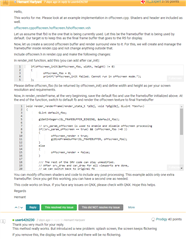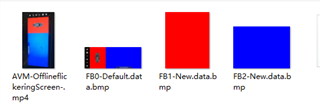Other Parts Discussed in Thread: TDA2
background:
Based on TDA4, SDK7.03, QNX system, to achieve off-screen rendering
problem:
what I want to do is this:
- Create 2 framebuffers, let’s call them fb1 and fb2.
- Render the scene to fb2 normally.
- Render fb2 to fb1 with one post-processing effect.
- Render fb1 to the default framebuffer (we’ll call it fb0) with another post-processing effect.
This method really works. But introduced a new problem: splash screen, the screen keeps flickering.
After verification: changing glFinish to glReadPixels, the flickering phenomenon still exists.
But the image saved by glReadPixels is normal.
The specific implementation is as follows:



